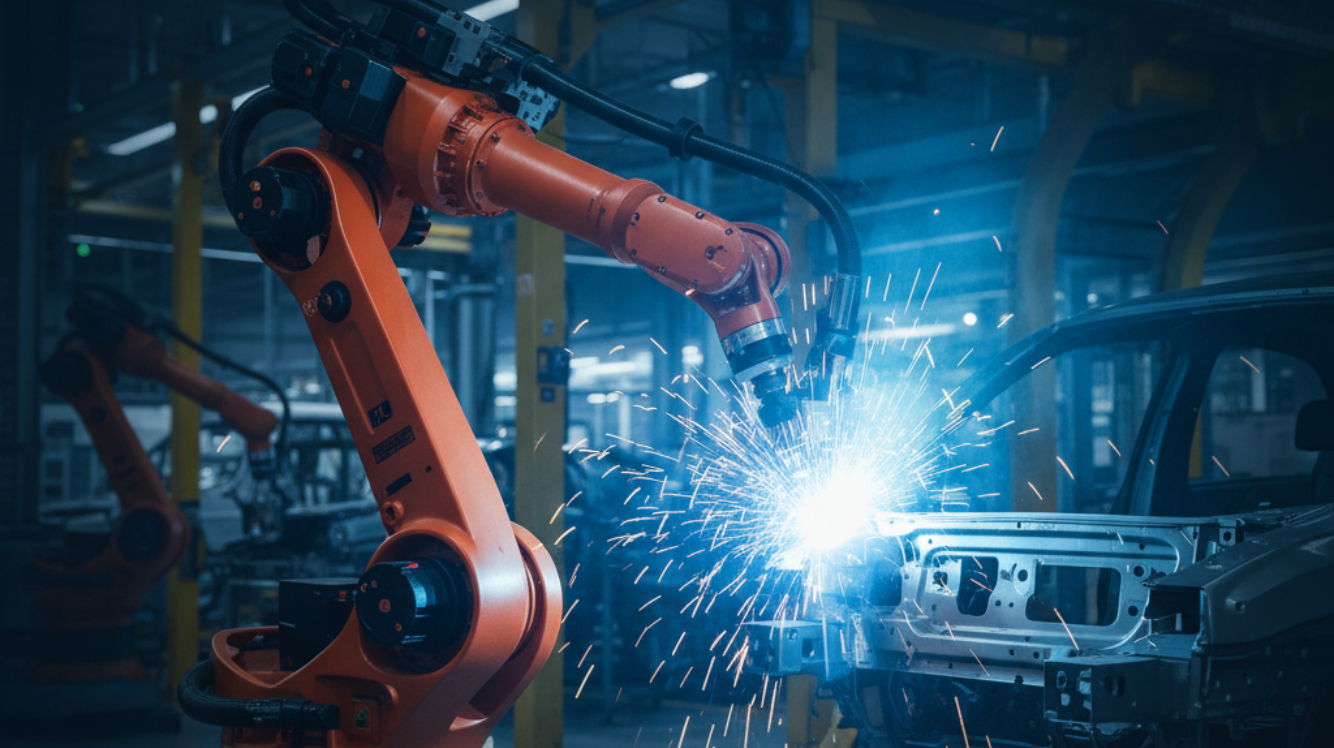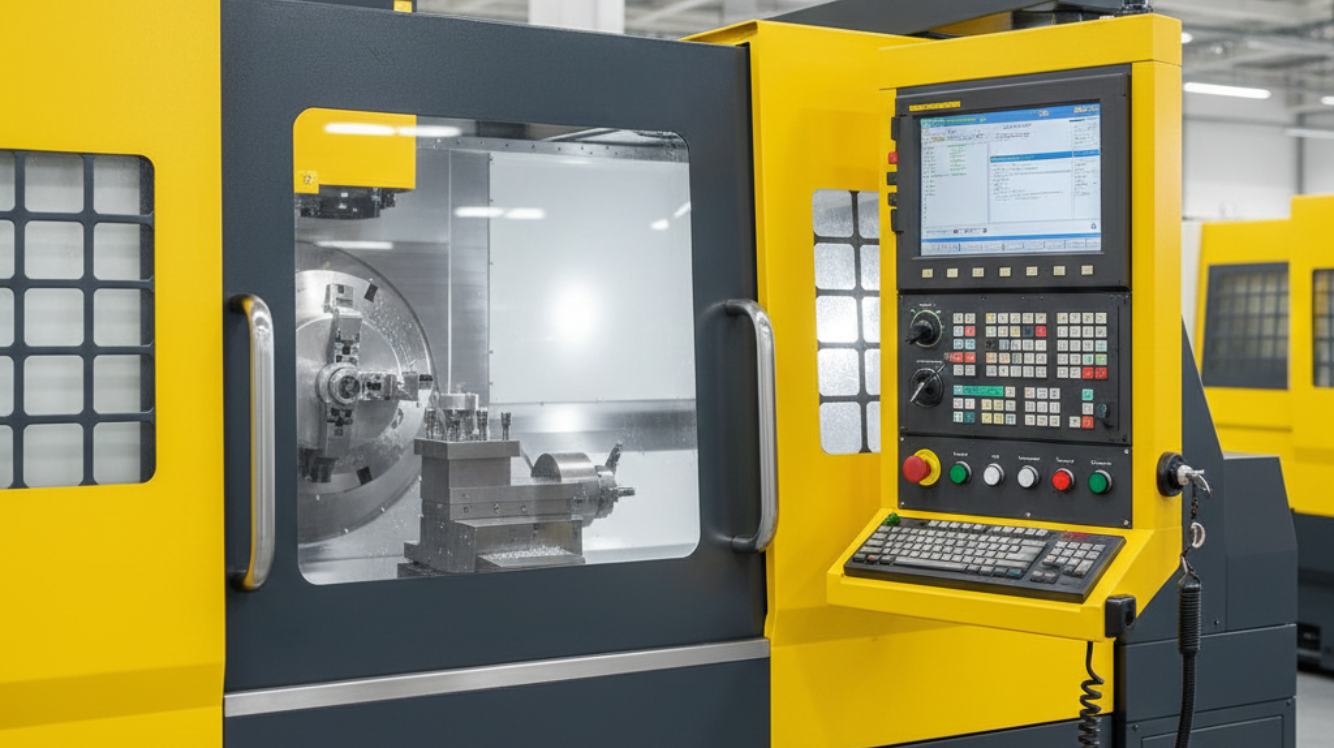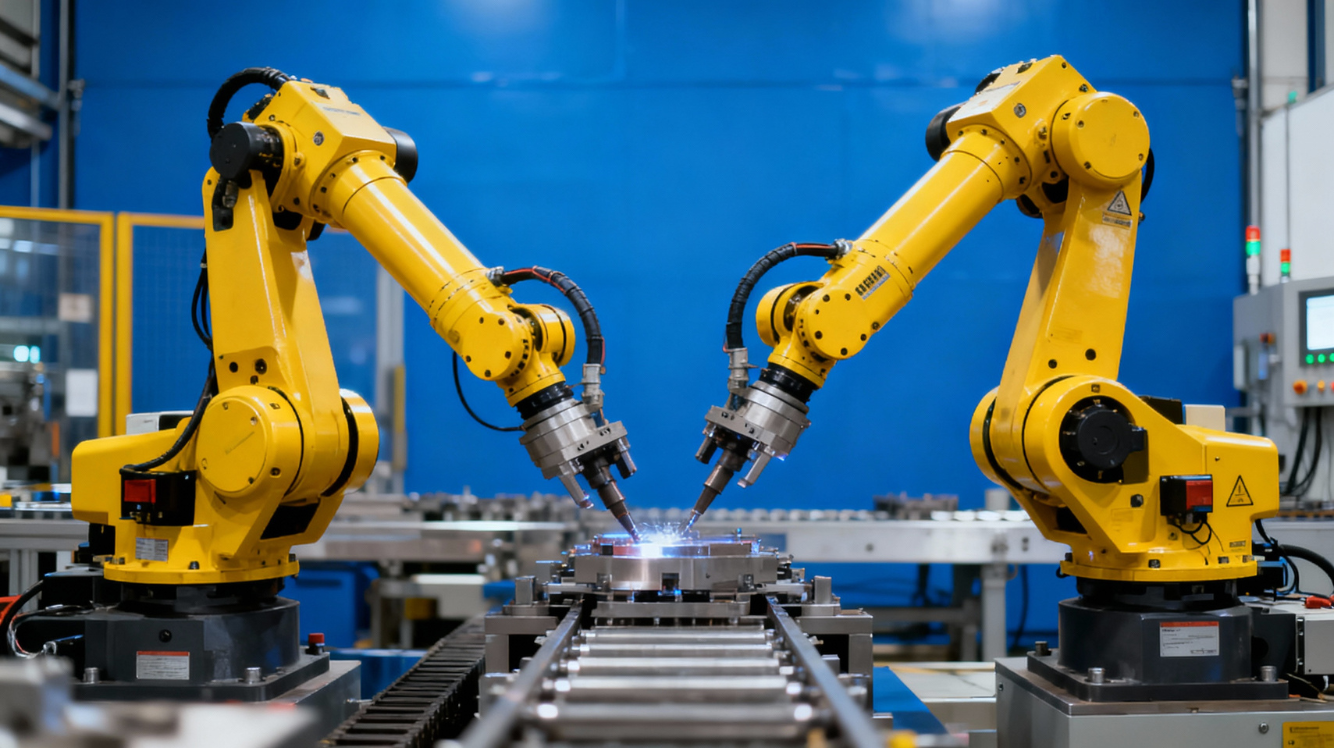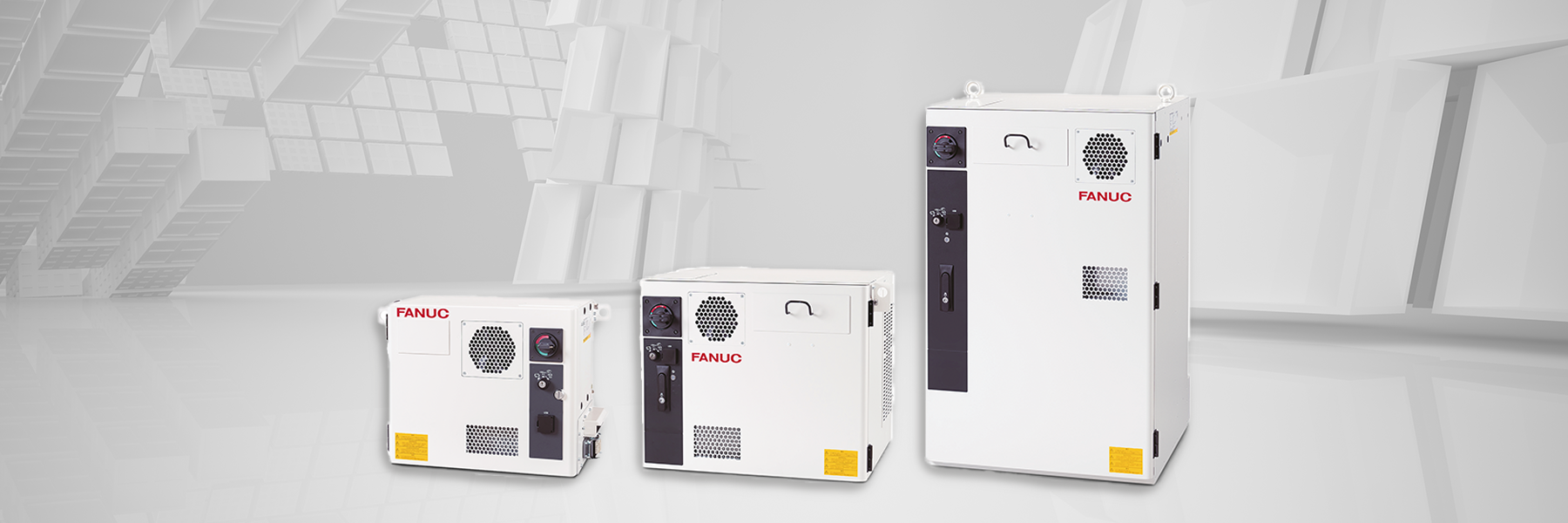
Walk into any modern factory today. You will see cars rolling off assembly lines, machines welding with perfect precision, packaging done in seconds, and you’ll find one thing in common: robots. Gone are the days when manual work alone made these items; instead, robots and humans work far more efficiently now. These robots used in industry aren’t science fiction; they are part of essential robot arm applications. They’re real, hardworking machines designed to do what humans can’t (or sometimes don’t want to): repeat a task thousands of times with zero complaints, zero coffee breaks, and almost zero error.
FANUC India, a leading name in industrial automation, has been helping manufacturers make this shift for years with its advanced fanuc robot solutions. From Robotics and CNC systems to machining tools, our technology is what gives us an edge. In this article below, we will break down the different types of robotic arms used in industry, where they’re used, what makes them amazing (and what doesn’t), and how they’re quietly making manufacturing faster, smarter, and more efficient.
You can think of industrial robots as dependable teammates on a factory floor. They’re machines built to handle repetitive, risky, or super-precise tasks like welding, painting, assembling, lifting, packaging, and so on. So contrary to popular belief, the idea is not to replicate humans, but to actually make the work faster, safer, and smoother. For instance, a robot used in the automotive industry can weld car frames for hours without losing accuracy, while human workers focus on inspecting quality or handling more creative problem-solving.
Now, of course, a lot of this efficiency also depends on the robotics joint types and basically which one you go for. Because every industry is on a different scaling level will demand a robotic arm of a different kind. Simply put, robots used in industry are the silent backbone of modern manufacturing, who are always working, always reliable, and never asking for a weekend off.
Let’s talk about the variety! Because when it comes to industrial robots, there’s no “one size fits all.” Here are some of the different types of robots used in industry, each with its own personality and robotics joint types:
These are the classic big ones you have probably seen in car factories. They have multiple joints, just like a human arm, shoulder, elbow, and wrist, and models such as the fanuc robot M-20 series demonstrate how flexible and precise articulated arms can be. Because of their flexibility, they can reach almost anywhere and perform those complex movements.
Where can you find these articulated robot arms? Welding car bodies, painting surfaces, or assembling components. Also, they love handling tasks like material loading, packaging, and polishing. So that’s there!
SCARA stands for “Selective Compliance Assembly Robot Arm.” Big name, simple idea: Scara robots are fast and precise. They are literally perfect for assembling or picking up small components. So if a phone or circuit board is being made, chances are a SCARA robot is part of the process.
Their design is what allows that quick back-and-forth movement. This makes them great at repetitive assembly-line work without losing speed or accuracy. Among the different types of robotic arms in the industry, SCARA is known for efficiency in spaces where speed matters more than strength.
Delta Robots are the spider-looking ones with three arms connected to a base. Delta robots are super fast and lightweight, often seen in the food and packaging industries.
If you have ever seen chocolates, biscuits, or medicine strips being packed at a crazy speed, that’s probably the Delta Robot arm doing its thing. So clearly, they are the best ones out there for lightweight materials. Not so much of the muscle, but definitely speed is something they are a pro at!
Cobots are friendly, people-safe robots designed to work alongside humans. Unlike traditional robots that operate behind the safety barriers, cobots can actually share a workspace with workers without posing any danger. They have sensors to detect touch and stop instantly if something comes in their way.
In fact, cobots, or collaborative robots, are one of the fastest-growing types of robotic arms, as they bridge the gap between automation and human teamwork.
Imagine a robot that moves in straight lines, up-down, left-right, forward-backward, across three axes. That’s a Cartesian robot. These are super precise and are often used for tasks like CNC machine loading, 3D printing, pick-and-place operations, or even packaging.
Now, because they work in linear frames, they are good at handling heavy loads with great stability!
Each of these different types of robots, whether it is an articulated robot arm or a Delta robot arm, plays a unique role. Whether it’s the strong articulated arm welding cars or a delta robot packaging snacks, they all share one goal: to make production faster, safer, and more reliable.
One thing is pretty clear that robots have completely reshaped manufacturing. But like any other technology, they come with their own pros and cons too:
So, how exactly do these types of robotic arms and machines make manufacturing more efficient?
Not every robot fits every job, as each has a different robotics joint type. Here is how you can choose the right one depending on what you want it to do:
Industrial robots aren’t just fancy machines; instead, they’re quiet revolutionaries. They don’t talk, they don’t rest, and yet they’ve transformed how the world makes things. From types of robotic arms to finding out which one suits you, it's a whole journey!
Sure, there are challenges like choosing from multiple robotic joint types, cost, maintenance, and adaptation. But the benefits are too strong to ignore!

Understand the CNC and VMC machine difference, their functions, applications, and which one suits your machining needs. A clear and simple comparison.
Know More
Understand the main types of industrial robots — articulated, SCARA, delta, and cobots. Learn their applications, advantages, and impact on modern manufacturing
Know More
Learn the four main industrial automation types—fixed, programmable, flexible, and integrated—and how they transform modern manufacturing systems.
Know More

.png)